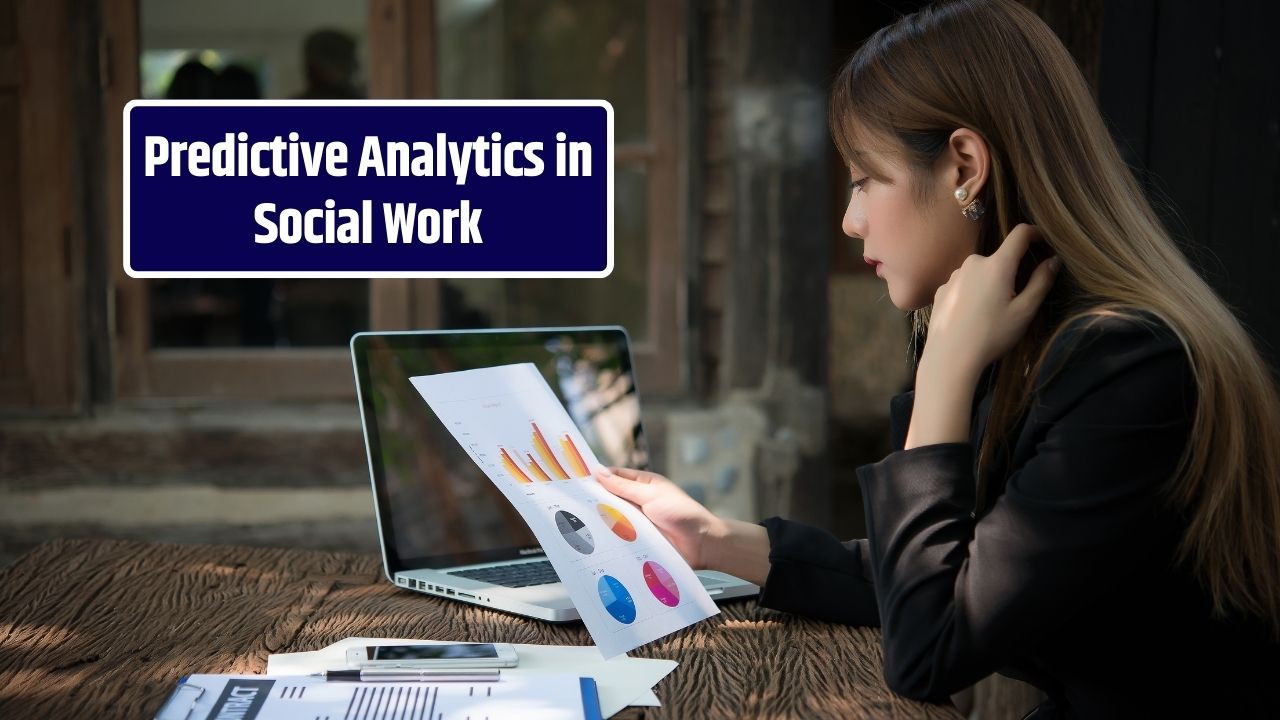Predictive analytics is transforming how social work professionals identify risk, allocate resources, and intervene before crises occur. By leveraging historical and real-time data, social service agencies can now forecast which individuals or families are most likely to need support—well before problems escalate. This proactive approach allows for smarter decision-making, better outcomes, and more efficient use of limited resources.
Table of Contents
What Is Predictive Analytics in Social Work?
Predictive analytics involves using statistical techniques and machine learning models to analyze current and historical data in order to make predictions about future events. In social work, this often means assessing risk factors—such as previous child welfare cases, income level, housing status, or health records—to estimate the likelihood of negative outcomes like abuse, homelessness, or re-entry into the system.
By applying algorithms to large datasets, agencies can score cases based on urgency, tailor interventions, and prioritize clients most in need of services.
Key Applications of Predictive Analytics in Social Work
Predictive models are increasingly being used across various branches of social work to improve service delivery and outcomes. Here are some major use cases:
| Area of Practice | How Predictive Analytics Is Used |
|---|---|
| Child Welfare | Flagging at-risk families for early intervention based on history and socio-demographic factors. |
| Homelessness Prevention | Identifying individuals likely to enter homelessness and targeting services proactively. |
| Juvenile Justice | Assessing recidivism risk to inform sentencing and rehabilitation strategies. |
| Substance Abuse Services | Predicting relapse risk to personalize treatment and follow-up care. |
| Elder Care | Detecting early signs of neglect or health decline in seniors based on behavioral patterns. |
These tools don’t replace human judgment, but they enhance it—helping professionals focus efforts where they can have the greatest impact.
Benefits of Predictive Analytics in Social Services
- Proactive Intervention: Anticipating needs allows social workers to act early, reducing long-term harm.
- Resource Optimization: Budgets and staffing can be allocated more efficiently when risks are quantified.
- Reduced Caseload Pressure: Prioritization helps social workers manage large caseloads without missing high-risk individuals.
- Improved Outcomes: Early and targeted services lead to better client outcomes in areas like education, safety, and health.
Ethical and Practical Concerns
While predictive analytics offers promise, it also comes with significant challenges:
- Bias and Discrimination: If the training data reflects past systemic biases (e.g., racial disparities in policing), predictions may perpetuate injustice.
- Transparency and Accountability: Many predictive models are “black boxes,” making it hard for clients or caseworkers to understand or contest decisions.
- Privacy Concerns: Using sensitive personal data raises questions about consent and data security.
- Over-Reliance on Technology: There’s a risk of replacing professional judgment with algorithmic suggestions, which can oversimplify complex human situations.
Ethical deployment requires transparent models, regular auditing for bias, community input, and clear guidelines for use.
Best Practices for Implementation
To responsibly use predictive analytics in social work, agencies should:
- Engage Stakeholders: Involve caseworkers, clients, and community groups in model design and review.
- Audit for Bias: Routinely test models for fairness and accuracy across demographics.
- Provide Training: Equip social workers with tools to interpret and use predictions effectively.
- Maintain Human Oversight: Ensure that data-driven insights inform—not dictate—decisions.
The Future of Data in Social Services
As technology evolves, predictive analytics will likely become standard in public welfare systems. Paired with real-time data and integrated platforms, it could eventually offer a 360-degree view of a client’s needs and service history.
But the most successful programs will be those that maintain empathy, ethics, and equity at the center of their design. Predictive tools are only as good as the systems and people who use them.
FAQs
Can predictive analytics replace social workers?
No. These tools are designed to support—not replace—professional judgment and relationship-based work.
Is data used in predictive analytics always accurate?
Not always. Inaccurate or biased data can lead to flawed predictions, which is why ongoing monitoring is crucial.
Are there any successful case studies?
Yes. For example, Allegheny County, PA uses a predictive risk model to support child welfare screening, helping caseworkers focus on high-priority cases.
How do agencies protect data privacy?
Agencies use encryption, limited access, and anonymization—but strong policies and transparency are also essential.


























